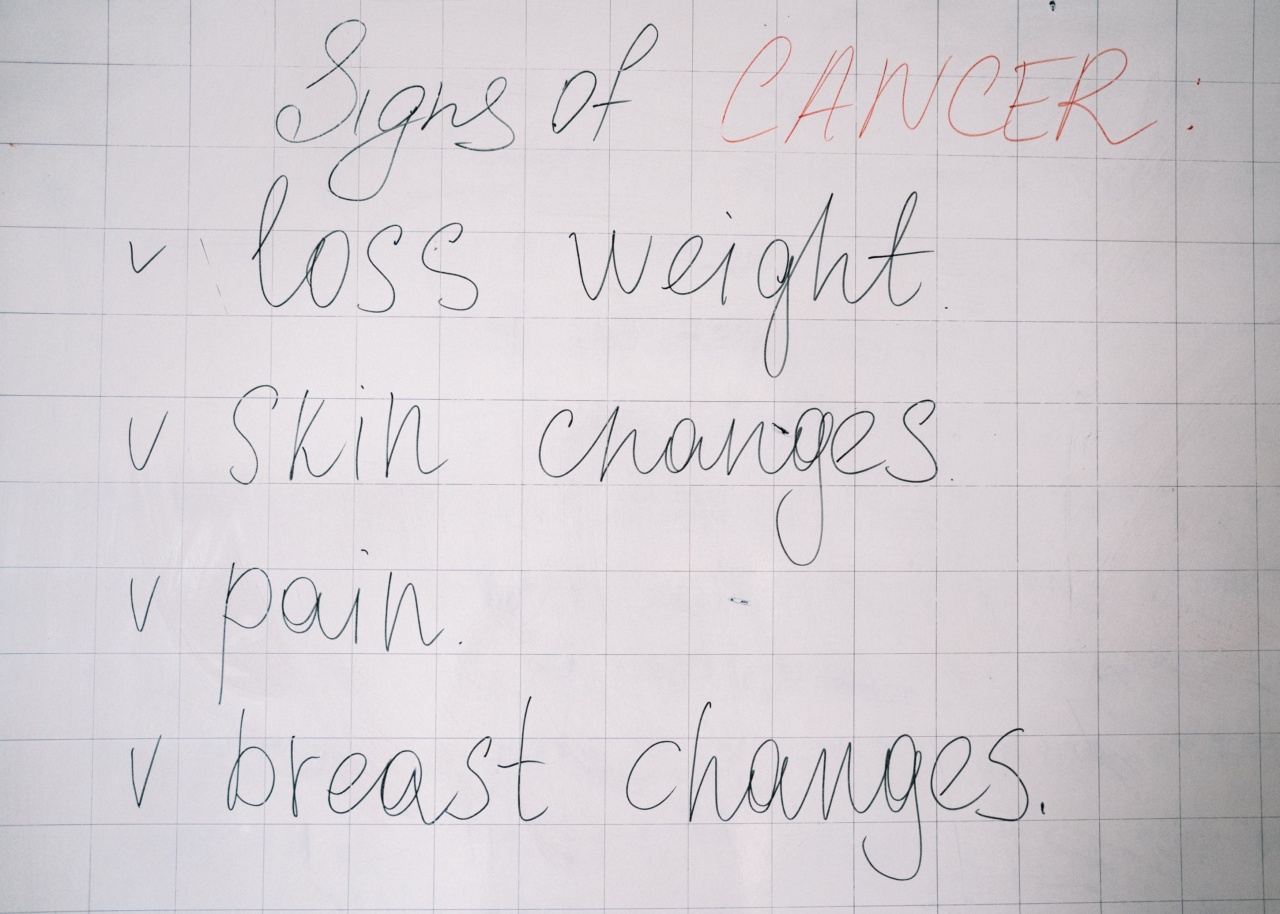Every year, over 795,000 Americans suffer from a stroke—a serious medical emergency that can lead to death or long-term disability. A stroke occurs when blood supply to the brain is blocked or interrupted, causing brain cells to die.
Strokes can happen to anyone at any age, but they are more common in older adults. Knowing the warning signs of a stroke and seeking immediate medical attention can save a life.
What are the Symptoms of a Stroke?
There are several warning signs of a stroke that you should be aware of. Remember the acronym FAST:.
F: Facial Weakness or Drooping
If one side of the face droops or feels numb, it could be a sign of a stroke. Ask the person to smile and check if one side of their face droops.
A: Arm Weakness or Numbness
If one arm is weak, numb, or feels heavy, it could be a sign of a stroke. Ask the person to raise both arms and see if one arm drifts downward.
S: Speech Difficulty
If the person has trouble speaking, slurs their words, or is difficult to understand, it could be a sign of a stroke. Ask the person to repeat a simple phrase, such as “The sky is blue.”.
T: Time to Call 911
If you notice any of these symptoms in yourself or someone else, call 911 immediately. Time is critical in treating a stroke—the sooner treatment begins, the better the chances of recovery.
Other Symptoms of a Stroke
In addition to FAST, there are other symptoms of a stroke that you should be aware of:.
1. Sudden Numbness or Weakness of the Face, Arm, or Leg
If you suddenly feel numbness or weakness on one side of your body, it could be a sign of a stroke. You may also experience a tingling sensation or loss of sensation in your face, arm, or leg.
2. Confusion or Trouble Understanding
If you feel confused or disoriented, have trouble understanding what people are saying, or have difficulty speaking, it could be a sign of a stroke.
3. Trouble Seeing in One or Both Eyes
If you suddenly have blurred or blackened vision in one or both eyes, or see double, it could be a sign of a stroke.
4. Severe Headache
If you suddenly have a severe headache with no obvious cause, it could be a sign of a stroke. This is more common in hemorrhagic strokes, which occur when a blood vessel in the brain ruptures.
5. Dizziness or Loss of Balance/Coordination
If you suddenly feel dizzy or have trouble walking, standing, or coordinating your movements, it could be a sign of a stroke. You may feel unsteady or have a sudden loss of balance.
What to Do if You Think Someone is Having a Stroke
If you suspect someone is having a stroke, it is important to act fast. Call 911 immediately and note the time when symptoms first appeared. Do not wait to see if the symptoms go away—time is critical in treating a stroke and every second counts.
In the meantime, stay with the person and keep them calm. Lay them on their side with their head slightly elevated and do not give them anything to eat or drink. If they start to vomit, turn them onto their side to prevent choking.
Preventing Strokes
While not all strokes can be prevented, there are steps you can take to reduce your risk:.
1. Control Your Blood Pressure
High blood pressure is a major risk factor for stroke. Get your blood pressure checked regularly and follow your doctor’s recommendations for controlling it.
2. Quit Smoking
Smoking doubles your risk of stroke. If you smoke, quit as soon as possible. Your doctor can help you develop a plan to quit smoking.
3. Exercise Regularly
Regular physical activity can lower your risk of stroke by improving your cardiovascular health. Aim for at least 150 minutes of moderate-intensity exercise per week.
4. Eat a Healthy Diet
A diet rich in fruits, vegetables, whole grains, and lean protein can lower your risk of stroke. Reduce your intake of saturated and trans fats, salt, and added sugars.
5. Maintain a Healthy Weight
Being overweight or obese puts you at a higher risk of stroke. Work with your doctor to develop a plan to achieve and maintain a healthy weight.
Conclusion
Knowing the warning signs of a stroke and seeking immediate medical attention can save a life. Remember the acronym FAST and act quickly if you notice any of the symptoms.
By taking steps to reduce your risk of stroke, you can protect yourself and your loved ones from this serious medical emergency.

























![The Importance of Recognizing Stroke Warning Signs [with Pictures]](/assets/media/medium/file/10/26/ec1752f20fddd8d6467d769d887430b3.jpg)





